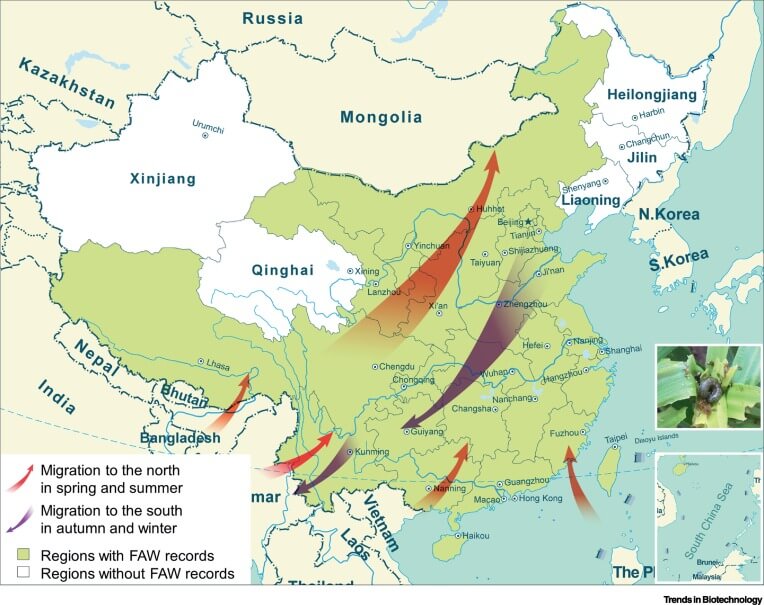Due to its wide host range, high reproductive and dispersal capacity, the fall armyworm (FAW), Spodoptera frugiperda (J.E. Smith), which is native to tropical and subtropical regions of the Americas, has become a major invasive pest on corn (Zea mays L.). It is rapidly spreading in Africa, the Near East and Asia. In December 2018, FAW was first found in Yunnan Province in China and has since spread quickly throughout the country, posing a serious economic threat to China’s crop production.
Presently, FAW has been reported from all but five provinces (municipalities) in the North West and North East. This large area includes about 13 million hectares of corn, the favored crop of this destructive pest. FAW is expected to cause much greater harm to China’s agricultural production than the cotton bollworm, Helicoverpa armigera (Hübner). Consequently, considerable effort is being devoted to developing strategies to minimize damage caused by this invasive pest.

Chemical insecticides are widely used for FAW management worldwide but also have limitations. Their efficacy is highly dependent on timing because FAW caterpillars are usually found in corn whorls where they are largely protected from insecticide treatments. Furthermore, over-reliance on chemical insecticides does not meet the strategic aim of achieving sustainable agricultural development in China, and, due to extensive application, FAW has developed resistance to multiple commonly used insecticides.
Globally, FAW has been found to be resistant to over 30 active ingredients of insecticides from all major classes. Moreover, genome-wide sequencing analysis revealed that FAW populations invading China already carry resistance to organophosphate and pyrethroid insecticides
Another strategy is to use genetically engineered (GE) corn that is resistant to FAW. GE crop varieties producing insecticidal crystalline (Cry) proteins and/or vegetative insecticidal proteins (Vip) derived from Bt that are selectively toxic to different insect species, are planted in many parts of the world to manage caterpillar pests, often reaching more than 80% adoption levels.
The high adoption levels, together with high control efficacy provided by the technology, has led to area-wide population reductions in some pests. In the Americas, the use of Bt corn hybrids is widely used to manage FAW. There is strong evidence available from the growing of Bt crops in general that they can reduce the use of chemical insecticides and benefit natural pest control due to the narrow spectrum of activity of the deployed Cry and Vip proteins.































